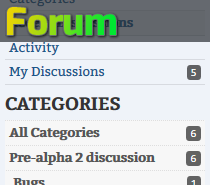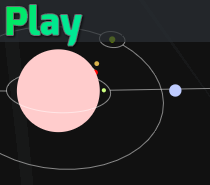This isn’t the Alpha3 release yet, but I wanted to release this part of the update early as it now makes the game playable for those that don’t have a computer or browser good enough to support WebGL.
It should start with the fallback CSS3D renderer and automatically switch to WebGL if you have support for it. And you can toggle between them in the settings to use whichever you prefer.
There are also various efficiency improvements to both the building of the star map initially, and the WebGL rendering.
The CSS3D renderer may still be slow for some, as it’s entirely CPU bound, especially if you have other programs eating up your CPU, but that’s what I’m going with as I can keep a reasonable degree of parity to how the star system is displayed for consistency.
I’m also changing how the writing funding works, effective August 1st, so Patrons’ money is more effective.
Previously, I assumed I’d be able to keep an active writing staff with the money involved, and I split 50% of the Patreon funds based on how much was written, but there wasn’t enough to encourage writing more when there weren’t other writers to compete again. My assumption was that if someone is getting paid $60 per thousand words, I could easily find someone to add onto the team and split that to $30 per thousand words… but apparently not.
Now, that 50% goes into a reserve. Writers are paid a base $15 per 1000 words from the reserve, and the rest is paid as a bonus each quarter if milestones are hit and a small bonus to their previous content so they can still earn significantly more to share in the success.
This way, such as right now, where I don’t have enough writers making enough content, that money is there in the reserve to fund getting a lot more content added once I do find more good writers.

Change notes
- WebGL is no longer a requirement. There is now a CSS3D fallback. This gives the same representation of the map, but is less pretty and renders entirely on the CPU.
- You can no longer zoom in absurdly far, or so close that it clips.
- The star now has some non-linear attenuation to give a more realistic impression of brightness.
- Text labels to select a landing destination are now translated in 3D space and sized to 2D space, instead of a 2D overlap positioned by 2D coords translated from 3D space. This makes everything more efficient, and positions the labels more smoothly and accurately.
- The star label uses this as well. Fixes some issues it had, but now it’s off centered that I’ll need to fix.
- Fixed an issue where the star label didn’t show when the intro is skipped.
- Many improvements to the renderer to use more instancing of materials/geometry, further improving performance and lowering memory usage.
- Settings are now divided in tabs, including the new graphics settings.
- The “settings” button is now a gear icon that appears everywhere, so the graphical settings can be changed on the star system map.
One thing the CSS3D rendering is missing is the line that connects the label to the spot in space or a planet when selecting a destination. It’s a pain and I’ll deal with that later after I get to more pressing issues first. And it’s pretty impossible to get decent looking stars in the background with it.




